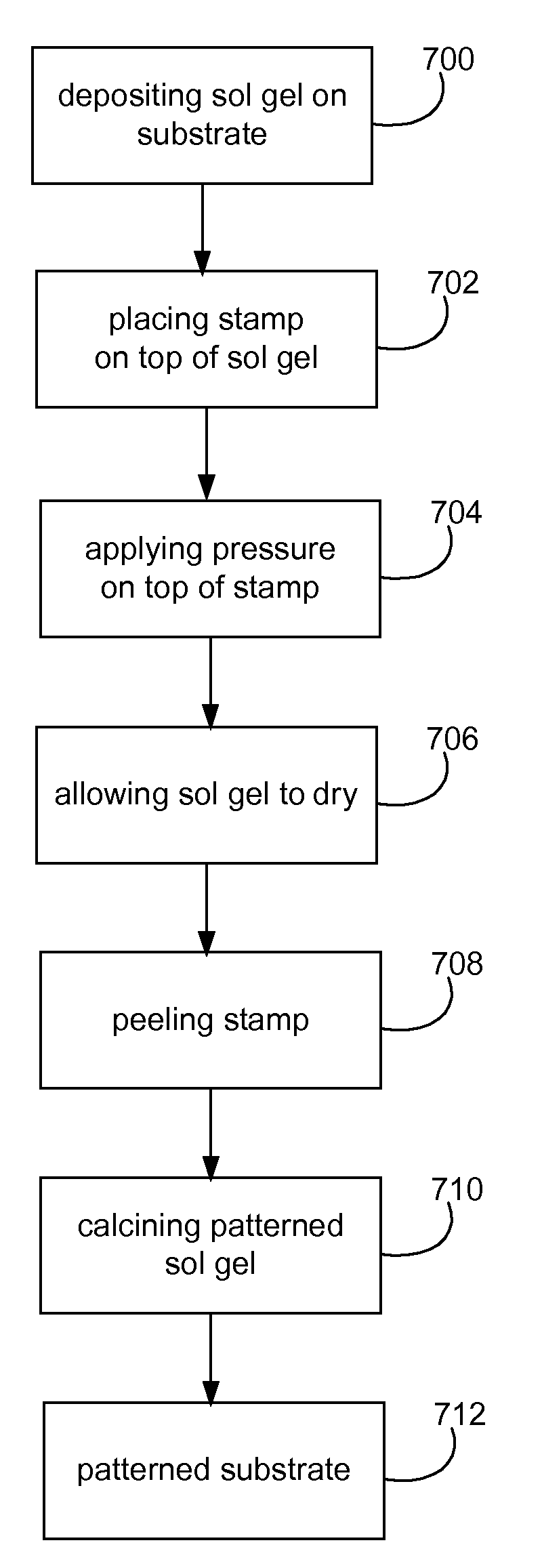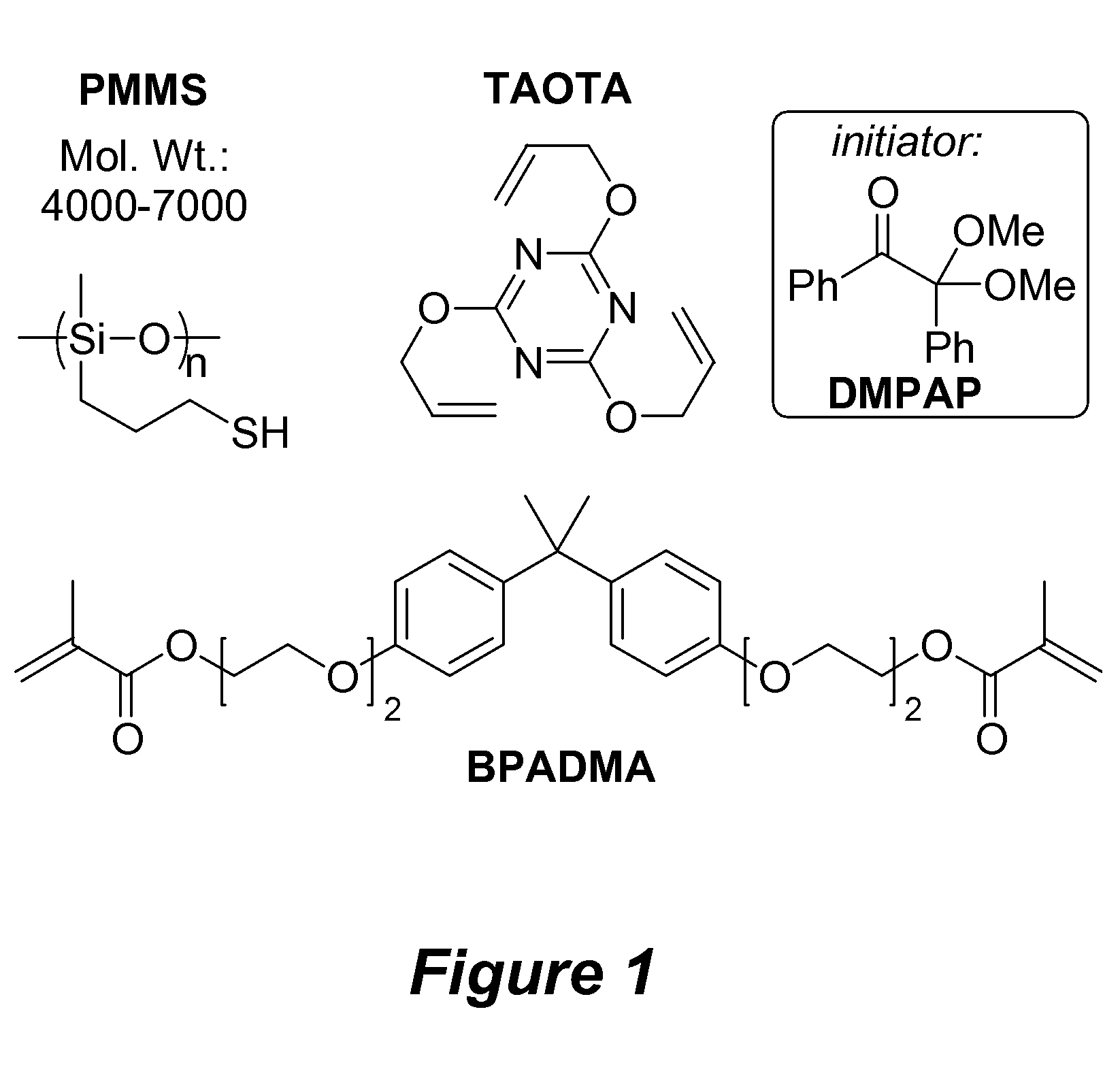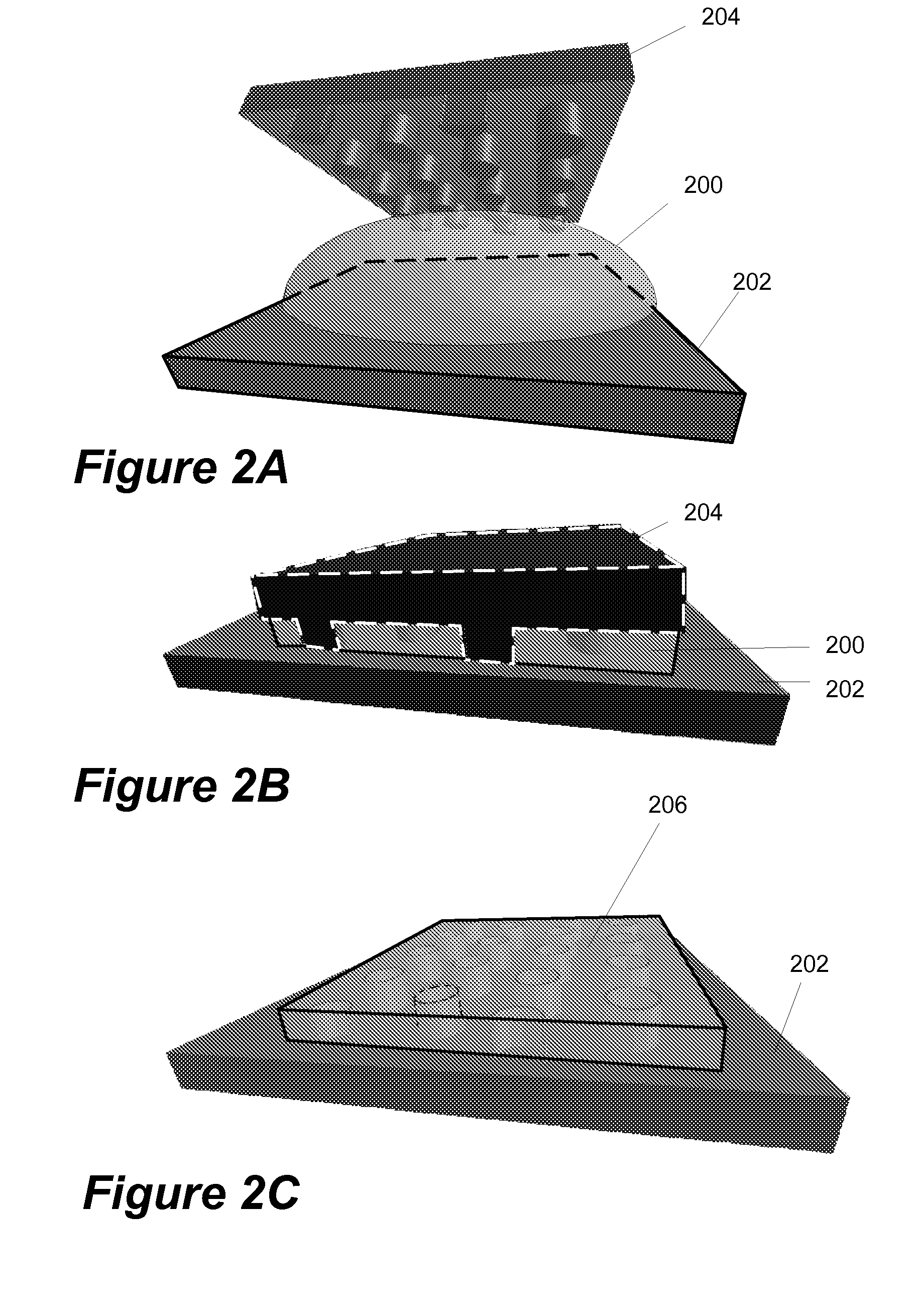Method for non-destructive patterning of photonic crystals employed for solid-state light extraction
a technology of photonic crystals and solid-state light extraction, applied in photomechanical equipment, instruments, manufacturing tools, etc., can solve the problems of requiring the use of expensive and time-consuming vacuum equipment (deposition, etching, lithography tools, etc., and achieve the effect of improving light extraction and being easily adaptabl
- Summary
- Abstract
- Description
- Claims
- Application Information
AI Technical Summary
Benefits of technology
Problems solved by technology
Method used
Image
Examples
Embodiment Construction
[0035]In the following description of the preferred embodiment, reference is made to the accompanying drawings which form a part hereof, and in which is shown by way of illustration a specific embodiment in which the invention may be practiced. It is to be understood that other embodiments may be utilized and structural changes may be made without departing from the scope of the present invention.
[0036]Overview
[0037]Photonic crystals have been suggested to increase the light extraction out of inorganic (see U.S. Pat. No. 5,955,749) or organic LEDs (see U.S. Pat. No. 6,630,684 B2), and high and low refractive index materials, e.g. titanium dioxide, zirconia or silica, play an important role in order to achieve periodic structures with high refractive index contrast. Efficient and inexpensive patterning methods with high reproducibility are important for mass-production of such devices. The most commonly used method in micro-electronics is photolithography, where a predetermined patte...
PUM
| Property | Measurement | Unit |
|---|---|---|
| pressure | aaaaa | aaaaa |
| pressure | aaaaa | aaaaa |
| feature sizes | aaaaa | aaaaa |
Abstract
Description
Claims
Application Information
 Login to View More
Login to View More - R&D
- Intellectual Property
- Life Sciences
- Materials
- Tech Scout
- Unparalleled Data Quality
- Higher Quality Content
- 60% Fewer Hallucinations
Browse by: Latest US Patents, China's latest patents, Technical Efficacy Thesaurus, Application Domain, Technology Topic, Popular Technical Reports.
© 2025 PatSnap. All rights reserved.Legal|Privacy policy|Modern Slavery Act Transparency Statement|Sitemap|About US| Contact US: help@patsnap.com



